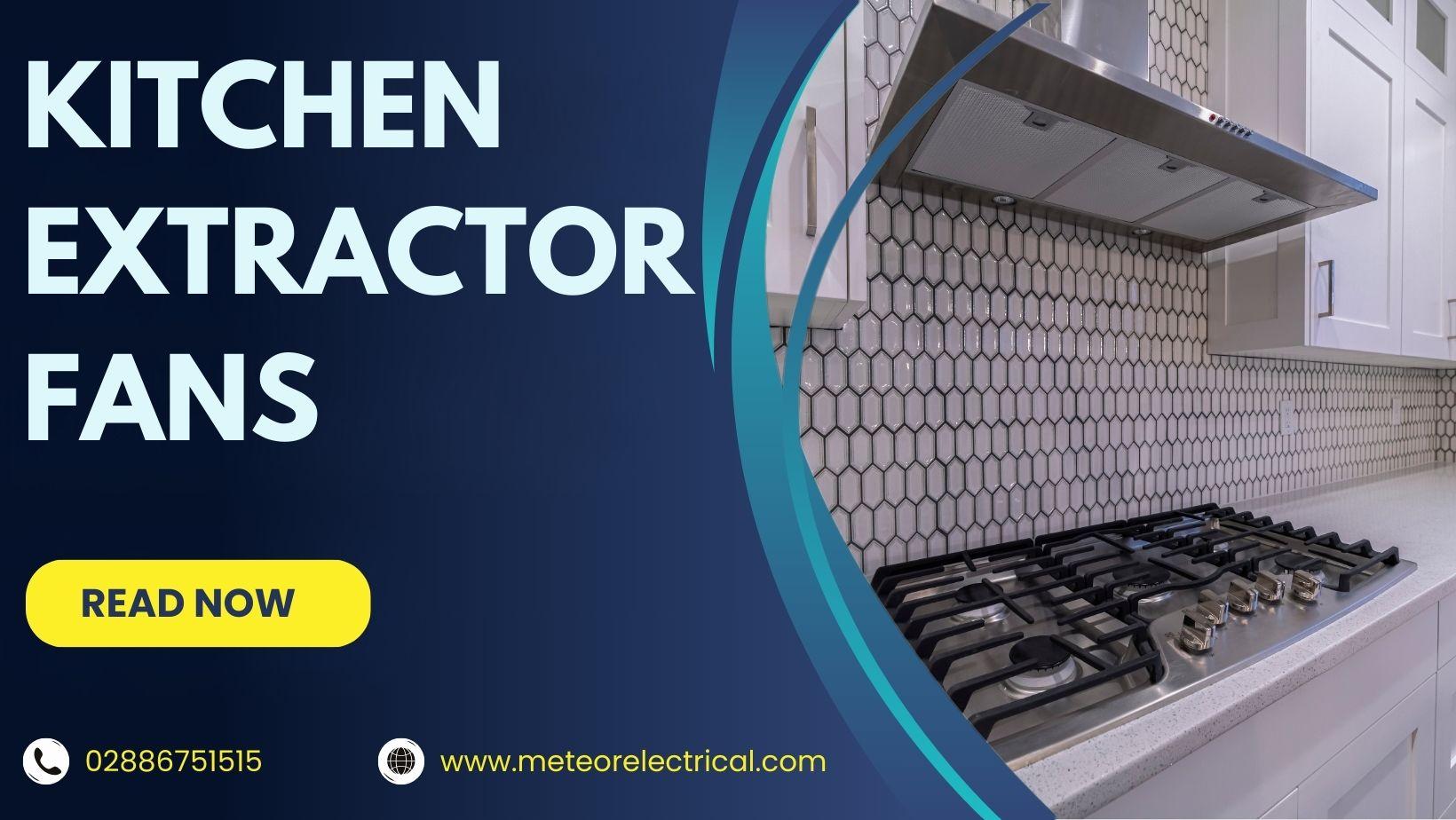Kitchen Extractor Fans: The Ultimate guide to Fresh Air and Fresh Flavours

Kitchen extractor fans are the unsung heroes of our homes, tirelessly working to maintain a clean, fresh, and efficient cooking environment. Whether you're an avid home chef or simply enjoy preparing meals for your family, these devices are essential for eliminating odours, steam, and grease, ensuring your kitchen stays pleasant and hygienic.
The Role of Kitchen Extractor Fans
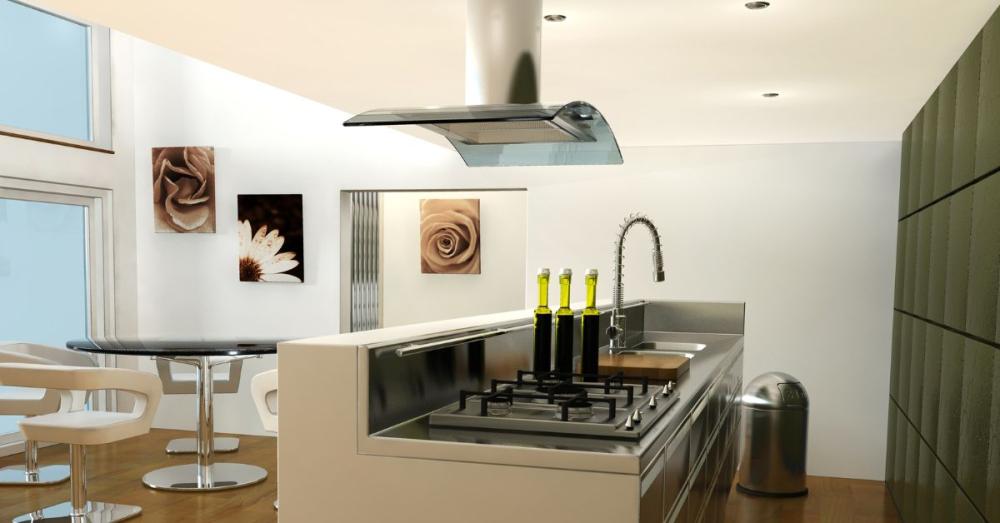
Kitchen extractor fans play a pivotal role in maintaining a healthy and pleasant cooking environment. Their primary function is to remove cooking odours, steam, and grease that can cling to surfaces and create an unpleasant atmosphere. Installing an extractor fan can significantly enhance your kitchen's air quality and overall functionality, ensuring a cleaner and more enjoyable space. According to Good Housekeeping, proper ventilation is key to a healthy kitchen environment.
Types of Kitchen Extractor Fans

Choosing the right extractor fan for your kitchen depends on your needs and setup. Here’s a closer look at the common types available:
1. Ducted Kitchen Extractor Fan
A ducted kitchen extractor fan draws air from the kitchen through a duct system and expels it outside. This type is highly effective at removing moisture and odours, making it an excellent choice for maintaining air quality. However, ducted fans require proper ductwork installation, which means professional help is essential (Homebuilding & Renovating).
2. Ductless Kitchen Extractor Fan
Ductless fans are another popular option, especially for kitchens where ducting is impractical. These fans draw air through a carbon filter, cleaning it before recirculating it back into the kitchen. While easier to install, they require regular filter replacement and can be noisier and more energy-consuming than ducted fans (Bob Vila).
3. Recirculation Kitchen Fans
Ideal for kitchens without ducting, recirculation fans use charcoal filters to remove grease and cooking odours from the air. While they don’t extract air outside, they improve air quality by continuously cycling and filtering it. This type of fan is perfect for homes where installing ductwork is not an option.
4. Integrated Kitchen Extractor Fans
Integrated kitchen extractor fans are excellent for maintaining a sleek, design-conscious kitchen. These fans blend seamlessly into the kitchen decor, offering all the functionalities of a regular extractor fan without disrupting the aesthetic. An integrated fan typically has a plain panel component at the front, giving it a clean look. Behind this panel are the motor and fan components that extract humidity and provide ventilation. Some models also feature vents that open and close depending on when the fan is in operation, maintaining a smooth design when the fan is switched off (Houzz).
5. Cooker Hoods vs. Extractor Fans
When it comes to kitchen ventilation, many people think of cooker hoods that go above their stoves. Cooker hoods push air through a filter and recirculate it back into the kitchen, which might be effective but is not as efficient as extractor fans. Modern cooker hoods use charcoal and grease filters to remove smoke and odours from the air. However, they are not as effective at removing smells as kitchen range hood extractor fans because the air is not processed completely. Additionally, frequent filter replacement is necessary to ensure the cooker hood works properly. If noise is a concern, silent-running kitchen hood extractor fans are available. These fans are quiet and efficient, pushing air from the kitchen outside through ducting. This method is far more effective at extracting odours and smoke from the air (Which?).
| Type | Pros | Cons | Suitable For |
|---|---|---|---|
| Ducted Extractor Fans |
|
|
Larger kitchens Homes with existing ductwork |
| Ductless Extractor Fans |
|
|
Smaller kitchens Apartments Kitchens without external venting |
| Recirculation Fans |
|
|
Homes where ducting is not feasible Secondary ventilation |
| Integrated Extractor Fans |
|
|
Design-conscious kitchens Modern, minimalist interiors |
| Axial Fans |
|
|
Small kitchens Light cooking activities |
| Centrifugal Fans |
|
|
Large kitchens Commercial or industrial kitchens |
Understanding Kitchen Extraction Systems

The first step to finding the right extraction system is understanding what it is and how it works. Extractor fans are a variation of electric fans, primarily used in bathrooms, kitchens, or laundry rooms to extract odours, smoke, and moisture from these areas. They are essential in maintaining air quality and comfort in these spaces.
One of the great benefits of extractor fans is their energy efficiency. Even the most powerful models use electricity efficiently, providing comfort and convenience without excessive energy consumption. Commercial extractor fans are available for large-scale installations, offering a higher air exchange capacity, making them perfect for commercial kitchens and industrial use.
If minimising energy use is a priority, look for small extractor fans with low-voltage features that reduce excess energy consumption. Despite their compact size, these small kitchen extractor fans provide excellent air extraction qualities.
Credit: Charlie DIYte
Is It Necessary to Install a Kitchen Extractor Fan?
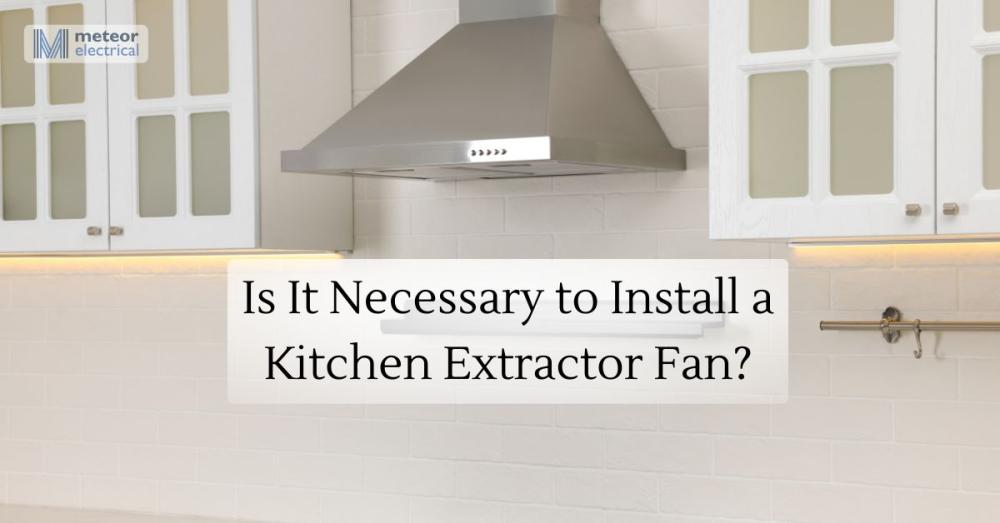
While many kitchens have windows for circulation, installing an extractor fan provides numerous benefits and makes your kitchen a more comfortable space. Having some form of ventilation is crucial in a kitchen. Poor air quality not only affects your health but can also impact the longevity and practicality of your kitchen space. Cooking produces various pollutants, from water vapour to grease and smoke, which can cause problems if not properly ventilated.
If you want to avoid dealing with poor air quality, investing in extractor fans is essential. These devices remove moisture and odours from the kitchen, leaving you with clean and refreshed air (HGTV).
Benefits of Installing a Kitchen Extractor Fan
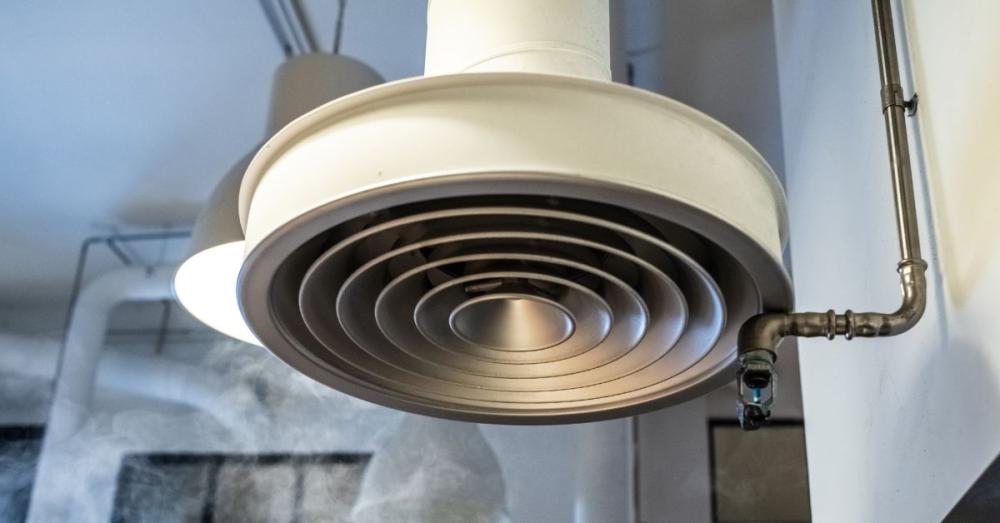
Even if your kitchen has windows for ventilation, installing an extractor fan offers numerous benefits that can significantly enhance your cooking experience and kitchen environment. Here are some key advantages:
Improves Air Quality
Kitchen extractor fans effectively remove cooking odours, smoke, and steam, ensuring your kitchen air remains fresh and clean. This is crucial for maintaining a healthy environment, especially in homes where cooking is frequent.
Reduces Smoke and Grease Buildup
Extractor fans efficiently extract smoke and grease from kitchen surfaces, preventing particles from settling on them. This reduces the need for frequent cleaning and helps maintain the kitchen's appearance and hygiene (Good Housekeeping).
Enhances Cooking Enjoyment
An extractor fan allows you to cook comfortably without worrying about lingering smells or a stuffy atmosphere. It keeps the air circulating, making your kitchen a more pleasant place to cook and socialise (Food Network).
Essential for Commercial Kitchens
In commercial kitchens, managing high levels of air pollutants is crucial for health and safety. Extractor fans are essential for maintaining proper hygiene and ensuring that the air quality meets health regulations (Gov. UK).
Reduces Moisture
Excess moisture from cooking can lead to mould and mildew growth. Extractor fans help by removing this moisture, thereby protecting your kitchen walls, cabinets, and appliances from potential damage.
By installing a kitchen extractor fan, you can significantly improve your kitchen's air quality, reduce maintenance efforts, and enhance your overall cooking experience. For more tips and products, visit Meteor Electrical and explore their wide range of extractor fans tailored to meet your needs.
How Do Extractor Fans Work?
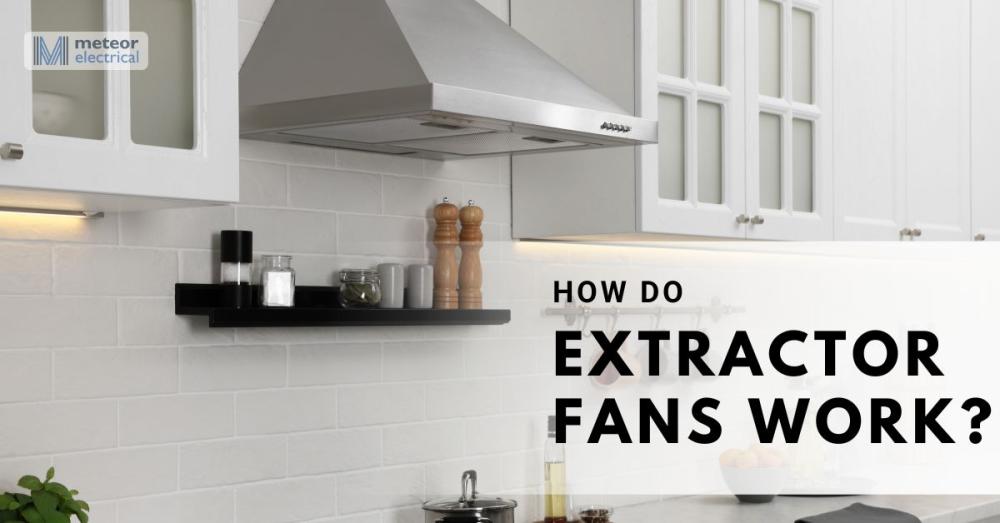
Understanding how extractor fans work can help you make an informed decision when selecting the best option for your kitchen. Extractor fans operate by drawing in air from the kitchen, filtering it if necessary, and either expelling it outside (ducted) or recirculating it back into the kitchen after filtration (ductless).
Airflow Mechanism
Extractor fans create a negative pressure environment, which pulls air from the kitchen and expels it through the fan's ducting or filters. The airflow rate, measured in liters per second (L/s) or cubic meters per hour (m³/h), determines how effectively the fan can remove pollutants from the air.
Filters and Maintenance
In ducted systems, the air is expelled outside, ensuring that pollutants are removed from the living space entirely. In ductless systems, activated carbon or charcoal filters trap odours and particles before the air is recirculated. Regular maintenance, including cleaning or replacing filters, is essential to maintain the fan's efficiency and longevity.
Energy Efficiency
Modern extractor fans are designed to be energy-efficient, using advanced motors and controls to minimise electricity consumption while maximising performance. Features like sensor-controlled operation and variable speed settings contribute to their efficiency and effectiveness.
Choosing the Right Extractor Fan
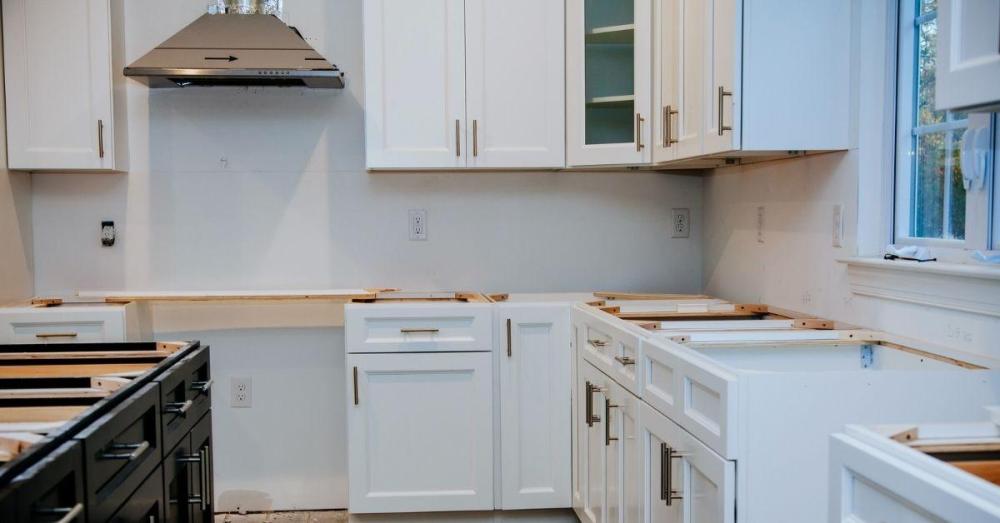
Selecting the perfect extractor fan for your kitchen involves considering several key factors to ensure optimal performance and efficiency. Here are the essential aspects to keep in mind:
Key Factors to Consider
Operating Modes
Choose between manual switches or remote controls. Advanced options like PIR (Passive Infrared) sensors that detect motion and humidity sensors that adjust the fan speed based on moisture levels can add convenience and efficiency (Houzz).
Air Exchange Rate
Ensure the fan meets building regulations for air removal efficiency. The required rate is typically measured in liters per second (L/s) or cubic meters per hour (m³/h). A higher rate is necessary for larger kitchens or those with high cooking activity.
Noise Level
Check the decibel (dB) rating for quiet operation, especially if you are sensitive to noise or have an open-plan kitchen (Which?). Look for fans designed to operate quietly without compromising performance.
Exterior Grills
Choose between fixed grills, which are static, or gravity grills, which open and close based on the fan's operation. Gravity grills can help prevent backdrafts but may produce noise (Better Homes & Gardens).
Heat Recovery
Some fans offer heat recovery options, which extract stale air and recycle heat, providing energy efficiency and preventing overheating (Energy Saving Trust).
Types of Extractor Fans
Axial Fans
Ideal for small spaces such as bathrooms and kitchens with short duct runs. They are designed to move air directly along the axis of the fan and are known for their low noise levels.
Centrifugal Fans
These fans offer high extraction rates, making them suitable for larger areas with longer duct runs. However, they can be noisier due to the powerful motor required.
Best Kitchen Extractor Fans
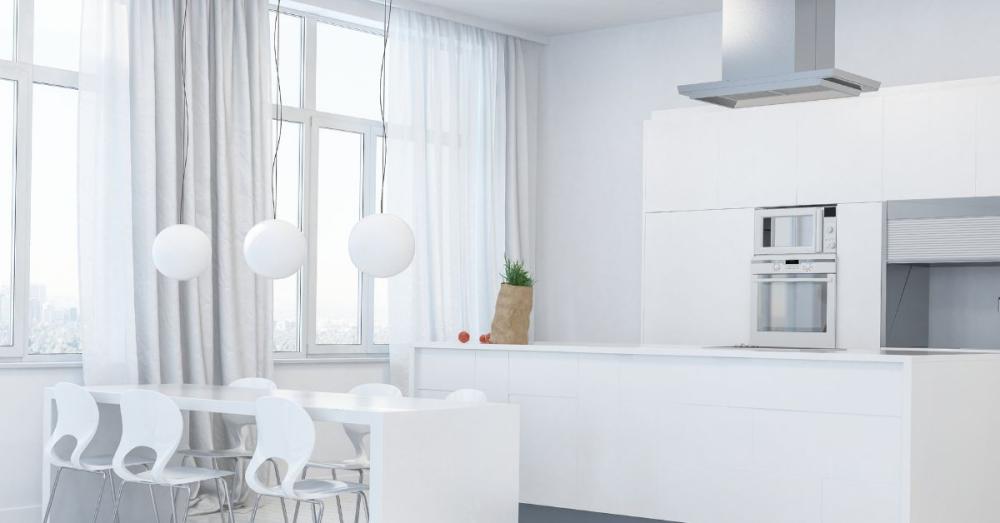
With so many options available, choosing the best kitchen extractor fan can be daunting. At Meteor Electrical, we offer a range of high-quality extractor fans designed to keep your home humidity-free while maintaining energy efficiency.
Top Pick: Xpelair Simply Silent Contour Extractor Fan
One of the standout options at Meteor Electrical is the Xpelair Simply Silent Contour Extractor Fan. This model combines powerful performance with a sleek design, making it an excellent choice for any kitchen.
Key Features:
- Over-Run Timer: Allows you to set the fan to run for a specific period after use, from a few seconds up to 30 minutes. This ensures that your kitchen remains free of residual odours and humidity even after you’ve finished cooking.
- Sensor Compatibility: The Xpelair Simply Silent Contour is compatible with sensor devices, providing automatic operation based on humidity levels or presence detection. This advanced feature adds convenience and efficiency to your kitchen ventilation.
- Ghost Air Movement Technology: Ensures that the fan operates quietly, making it perfect for open-plan kitchens where noise levels need to be minimised.
- High Efficiency: With an air exchange rate of 15L/s or 21L/s, this extractor fan provides powerful air circulation without excessive energy consumption. It's designed to keep your kitchen environment comfortable and healthy.
- Modern Design: Boasts a clean, contemporary design that seamlessly integrates into any kitchen decor. Its unobtrusive appearance ensures it complements your kitchen’s aesthetic without standing out.
By choosing the Xpelair Simply Silent Contour Extractor Fan from Meteor Electrical, you're investing in a product that offers both functionality and style. It's engineered to enhance your kitchen environment, providing efficient ventilation while operating quietly and effectively.
For more information and to explore our full range of extractor fans, visit Meteor Electrical today. Discover how our products can improve your kitchen’s air quality and overall comfort.
Cooker Hood vs. Extractor Fan
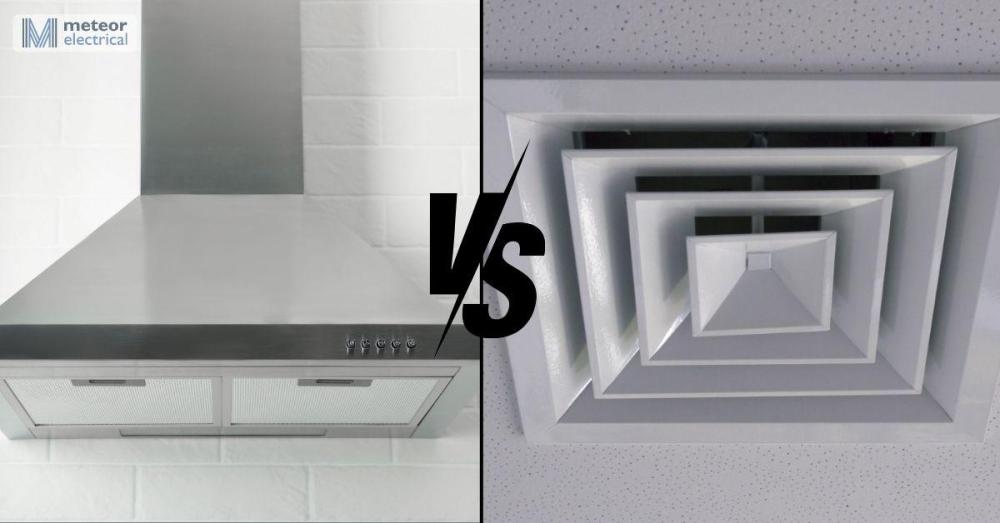
Understanding the difference between cooker hoods and extractor fans can help you make the best choice for your kitchen ventilation needs.
Cooker Hoods
Cooker hoods are typically mounted above the stove and primarily focus on capturing smoke and odours at the source. They use filters (charcoal and grease) to clean the air before recirculating it back into the kitchen. While effective to some extent, cooker hoods are generally less efficient than extractor fans in fully removing odours and moisture.
Extractor Fans
Extractor fans, on the other hand, are designed to remove air from the entire kitchen space, not just above the stove. They can be ducted to expel air outside, making them more effective at eliminating odours, moisture, and grease from the entire kitchen. Additionally, extractor fans often come with advanced features like timers, sensors, and quieter operation compared to traditional cooker hoods.
Conclusion: While both cooker hoods and extractor fans aim to improve kitchen ventilation, extractor fans provide a more comprehensive solution for maintaining air quality and comfort in your kitchen.
Integrated Kitchen Extractor Fans
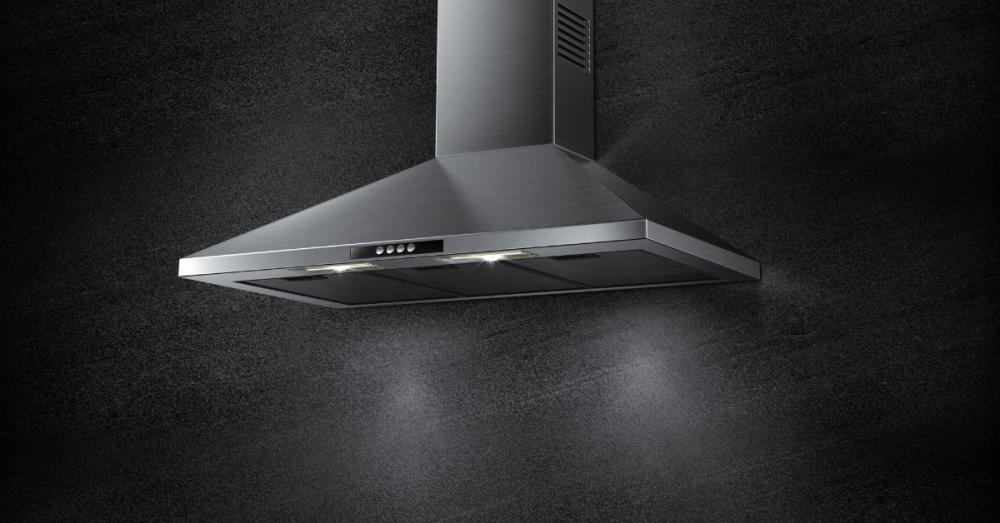
Integrated kitchen extractor fans offer a seamless blend of functionality and aesthetics. These fans are designed to be discreet, blending into the kitchen's overall design without being obtrusive. They typically feature a minimalist panel that conceals the fan and motor, maintaining the kitchen's sleek look.
Benefits of Integrated Extractor Fans
- Aesthetic Appeal: Their discreet design ensures that the extractor fan does not disrupt the kitchen's visual harmony.
- Space-Saving: Integrated fans are often more compact, making them ideal for kitchens with limited space.
- Advanced Features: Many integrated models come with smart features like automatic sensors, remote controls, and customisable settings for enhanced convenience.
Choosing an Integrated Extractor Fan
When selecting an integrated extractor fan, consider factors such as design compatibility with your kitchen, ease of installation, and available features. Brands like Houzz offer a variety of stylish and efficient integrated extractor fans to suit different kitchen styles and requirements.
Installation Tips for Kitchen Extractor Fans
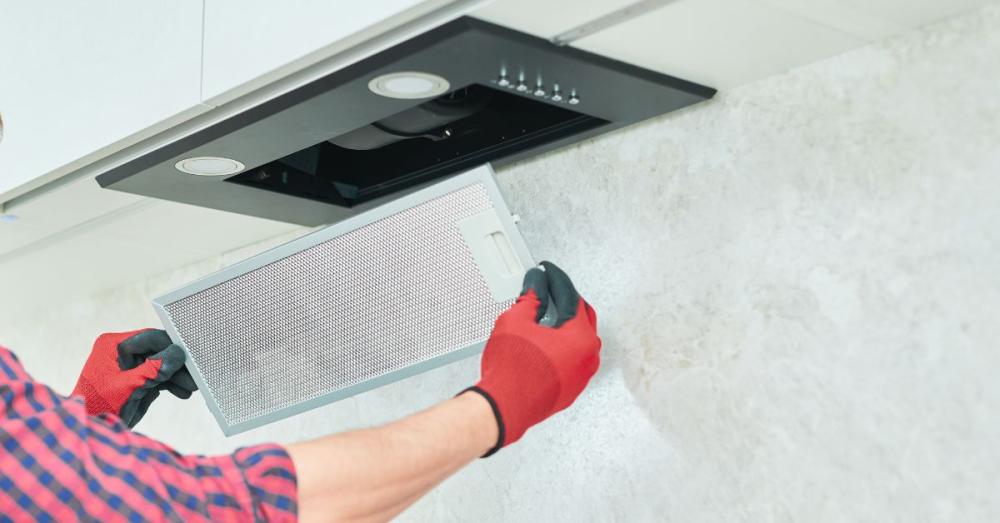
Proper installation is crucial to ensure the optimal performance of your kitchen extractor fan. Here are some tips to help you achieve the best results:
Professional Installation
While some extractor fans can be installed as a DIY project, it's often recommended to hire a professional, especially for ducted systems. Professional installation ensures that the fan is correctly fitted, ductwork is properly sealed, and all electrical connections are safely managed.
Placement
The placement of your extractor fan is vital for maximum efficiency. Ideally, the fan should be installed directly above the cooking area to capture smoke and odours effectively. Ensure there is enough clearance from the cooking surface to prevent grease buildup on the fan.
Ventilation Pathway
For ducted fans, ensure that the ventilation pathway is as straight and short as possible to minimise resistance and improve airflow. Avoid unnecessary bends and turns in the ductwork, as these can reduce the fan's efficiency.
Maintenance Access
When installing the extractor fan, consider ease of access for maintenance. Regular cleaning and filter replacement are essential for maintaining the fan's performance, so ensure that these components are easily reachable.
Maintenance Tips for Longevity
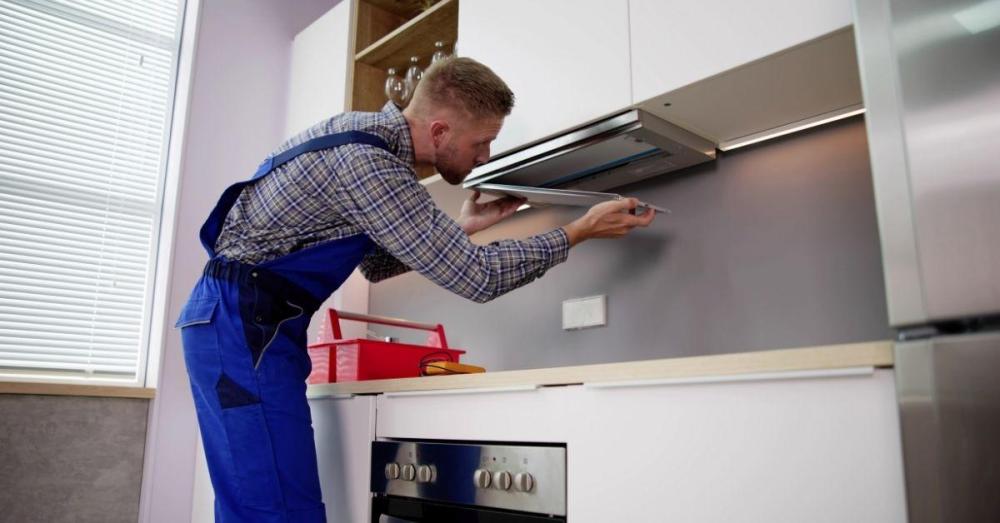
Regular maintenance extends the lifespan of your kitchen extractor fan and ensures it operates efficiently. Here are some maintenance tips:
Clean Filters Regularly
For ductless and recirculation fans, clean or replace the filters as recommended by the manufacturer. This prevents clogging and maintains the fan's ability to remove odours and grease effectively.
Inspect Ductwork
For ducted fans, periodically inspect the ductwork for any blockages or buildup. Clean the ducts if necessary to ensure unobstructed airflow.
Check for Noise and Vibrations
Unusual noises or vibrations can indicate that the fan is not functioning correctly. Address any issues promptly to prevent further damage.
Lubricate Moving Parts
If your extractor fan has moving parts, ensure they are properly lubricated to reduce wear and tear and maintain smooth operation.
Professional Servicing
Consider having your extractor fan professionally serviced annually. This helps identify and fix potential issues before they escalate, ensuring the fan remains in top condition.
Credit: StatUpBox
Energy Efficiency and Sustainability
In today's environmentally conscious world, energy efficiency and sustainability are paramount considerations when selecting kitchen extractor fans. Here’s how you can ensure your fan is eco-friendly:
Choose Energy-Efficient Models
Look for extractor fans with high energy efficiency ratings. These models use less electricity while providing optimal performance, reducing your energy bills and environmental footprint.
Opt for Timers and Sensors
Fans with timers and sensors can adjust their operation based on your needs, ensuring they run only when necessary. This minimises energy wastage and enhances efficiency.
Recyclable Materials
Consider extractor fans made from recyclable materials. This contributes to reducing waste and supports sustainable manufacturing practices.
LED Lighting
Some extractor fans come with integrated LED lighting, which is more energy-efficient than traditional lighting options. This dual functionality enhances the fan's practicality while conserving energy.
Smart Extractor Fans
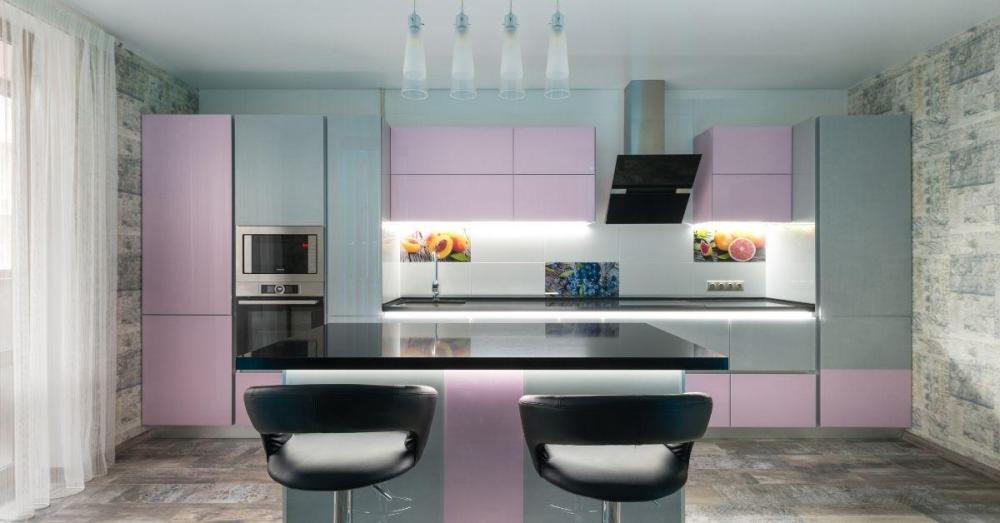
Advancements in technology have led to the development of smart extractor fans, which offer enhanced control and automation. These fans can be integrated with smart home systems, allowing you to manage ventilation remotely via smartphones or voice commands.
Features of Smart Extractor Fans
- Remote Control: Adjust fan settings from anywhere using a mobile app.
- Automated Operation: Set the fan to operate based on cooking schedules or detected moisture levels.
- Voice Activation: Control the fan using voice commands through virtual assistants like Amazon Alexa or Google Assistant.
- Energy Monitoring: Track energy usage and optimise fan operation for efficiency.
Benefits of Smart Extractor Fans
- Convenience: Manage your kitchen ventilation effortlessly with remote controls and automation.
- Efficiency: Smart features ensure the fan operates only when needed, reducing energy consumption.
- Integration: Seamlessly integrate with other smart home devices for a cohesive home automation experience.
Conclusion
Kitchen extractor fans are essential for maintaining a healthy, clean, and enjoyable cooking environment. By effectively removing odours, moisture, and grease, they enhance air quality and protect your kitchen from potential damage. When selecting the best kitchen extractor fan, consider factors such as the type of fan, air exchange rate, noise levels, energy efficiency, and design compatibility with your kitchen.
At Meteor Electrical, we offer a wide range of high-quality extractor fans tailored to meet diverse kitchen needs. Whether you're looking for a sleek integrated model, a powerful ducted system, or a smart extractor fan with advanced features, we have the perfect solution for you. Explore our selection today and breathe easy with our top-notch kitchen extractor fans.
For more guides, how-tos, and information on improving your home, visit our blog.
FAQs - Kitchen Extractor Fan
Do you really need an extractor fan in the kitchen?
Yes, an extractor fan is essential in a kitchen. It helps remove cooking odours, smoke, and steam, improving air quality and maintaining a pleasant environment. Even if your kitchen has windows, an extractor fan provides more efficient and consistent ventilation.
Which is better, a cooker hood or an extractor fan?
While both cooker hoods and extractor fans are designed to improve kitchen ventilation, extractor fans are generally more effective at removing odours, smoke, and moisture from the kitchen. Cooker hoods recirculate air through filters, while extractor fans expel air outside, providing better overall air quality.
What is the best type of extractor fan for kitchens?
The best type of extractor fan for your kitchen depends on your specific needs. Ducted fans are highly effective at removing moisture and odours but require professional installation. Ductless fans are easier to install and ideal for kitchens where ducting is impractical, but they require regular filter maintenance. Recirculation fans are great for improving air quality in kitchens without ducting options.
Do extractor fans use a lot of electricity?
No, extractor fans are designed to be energy-efficient. Even powerful models use electricity efficiently, ensuring comfort and convenience without excessive energy consumption. Look for fans with energy-saving features to minimise electricity usage further.
How often should you clean an extractor fan?
Extractor fans should be cleaned every three to six months to ensure optimal performance and prevent the buildup of grease and grime.
Can you install an extractor fan yourself?
While some extractor fans can be installed by homeowners, professional installation is recommended, especially for ducted fans, to ensure proper setup and compliance with local building codes.
What is Ghost Air Movement technology?
Ghost Air Movement technology is a feature in some extractor fans that ensures quiet operation by minimising noise generated during use.

